It’s 11:15 in the morning on one of the hottest days in history and I’m in a white-walled exhibition space, staring at a domed structure suspended from the ceiling. The dome is varnished matte black and shaped somewhere between an oversized eco-chic lampshade and a fifth grader’s diorama of a volcano—all pudgy curves and asymmetric slopes. Underneath sits a small table, almost a stool, made of the same amorphous material. The table is fitted with a brass fixture loosely reminiscent of a guitar but (so the adjacent panel tells me) is actually a replica of the 17th-century microscope designed by Dutch scientist Antonie van Leeuwenhoek—a nod to the father of microscopy.
From a speaker concealed in the dome, a voice intones:
In the midst of a global pandemic, on the eve of an irreversible climate emergency, and in the early, thrilling decades of a biotech revolution, the human race began to question its relationship to the natural world. For many years, scientists believed life to be a competition, one that humanity must win… But as biologists learned more about living systems, it became undeniable that interdependence was key to understanding life on Earth.
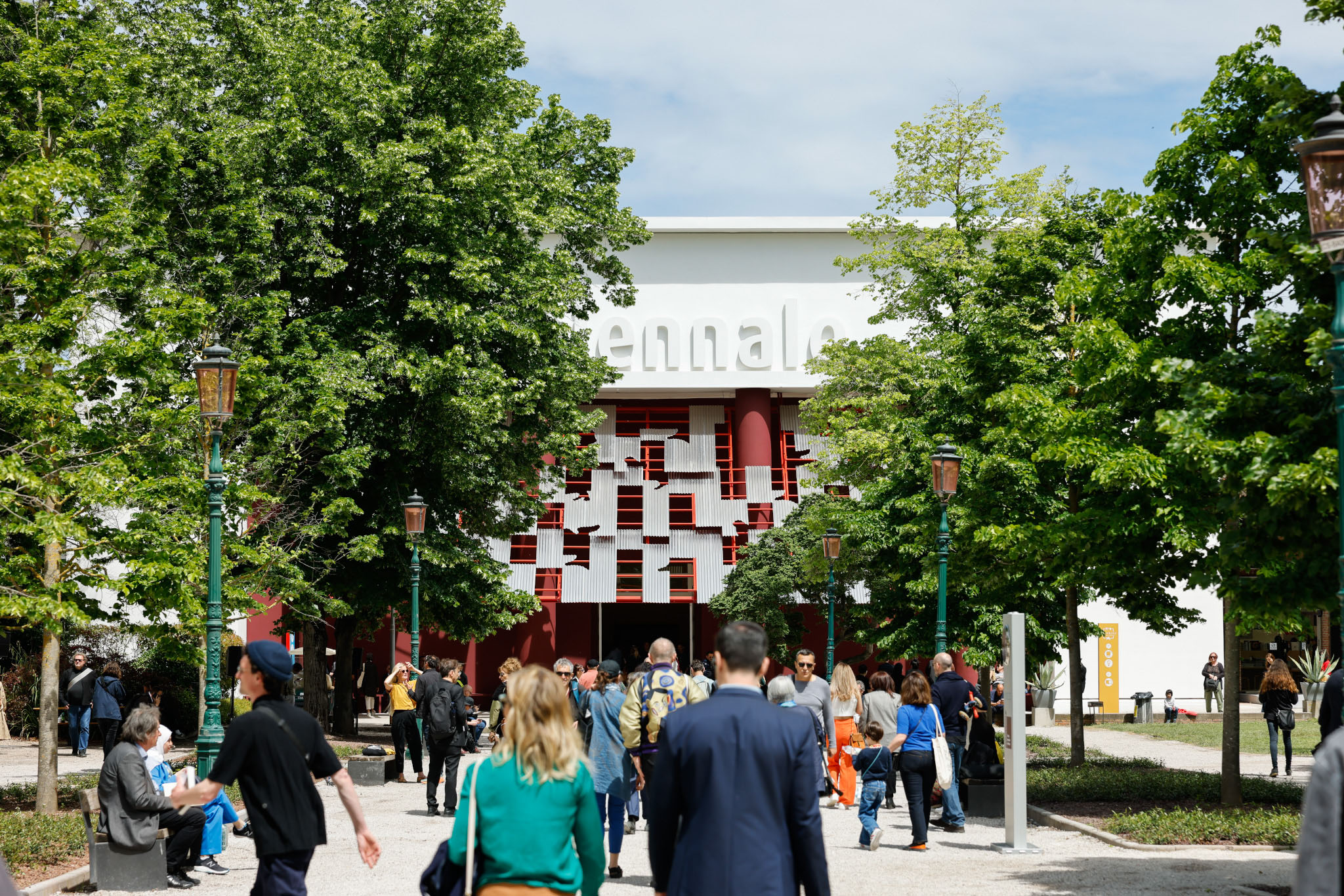
This is Museum of Symbiosis, half art installation (or “immersive audio experience,” according to the panel), half hopeful preview of the future of humankind thanks to biotechnology. It appears within the central pavilion of the 2023 Venice Biennale of Architecture in collaboration with Lesley Lokko, a Ghanaian-Scottish academic, architect, and prolific novelist, who also happens to be the Biennale’s first Black curator. The theme this year is “Laboratory of the Future,” with a spotlight on Africa as both the world’s oldest inhabited continent, and its youngest, with 70 percent of the current sub-Saharan population under the age of 30. Half of the main Biennale pavilion’s 89 participants are African or part of the African diaspora. Decarbonization and decolonization are twinned subthemes, timely prompts within a rapidly urbanizing continent where only two countries—Liberia and Ethiopia—were never colonized.
Museum of Symbiosis was developed by Faber Futures, a biodesign lab from London, and manufactured by Mogu, an Italian biofabrication company. Mogu has an interior design venture involving fungus-derived flooring and acoustic panels and designed a €9,000 ($9,814) “mushroom leather” full-length coat for the fashion house Balenciaga. Mushroom leather is something of a misnomer. The material is mycelium, the subterranean fungal body you don’t normally see that branches through the soil in interconnected, substrate-tangled threads, flowering above ground into mushrooms—the organism’s reproductive organs. Mycelium threads are the recyclers of the forest floor, converting waste into resources and facilitating the passage of carbon and other nutrients between trees—and maybe even inter-plant communication, through a process summed up by German forester Peter Wohlleben’s cutesy moniker: “wood-wide web.” Mycelial fossils have been found in basalt rock dating back 2.4 billion years.
This installation is also grown from mycelium, a fact I’m familiar with from the press kit but can’t detect until I duck my head inside the dome (a natural amplifier) to hear the recording better. I am hit with an earthy, tangy scent that I momentarily struggle to place, until I realize that it smells, well… mushroomy. Is this an odor we should all be getting used to?
“Fungi have been underestimated for quite a long time and only now we are starting—pretending to know about their behaviors and how we could cooperate. But the reality is that we don’t know anything,” Maurizio Montalti, co-founder and chief mycelium officer at Mogu, tells me. “We are barely scratching the tip of the iceberg.”
Welcome to the “mycelium revolution,” as mycelial biofabrication has been dubbed—which seeks to purpose fungal fibers in place of everyday materials for clothing, packaging, and construction.
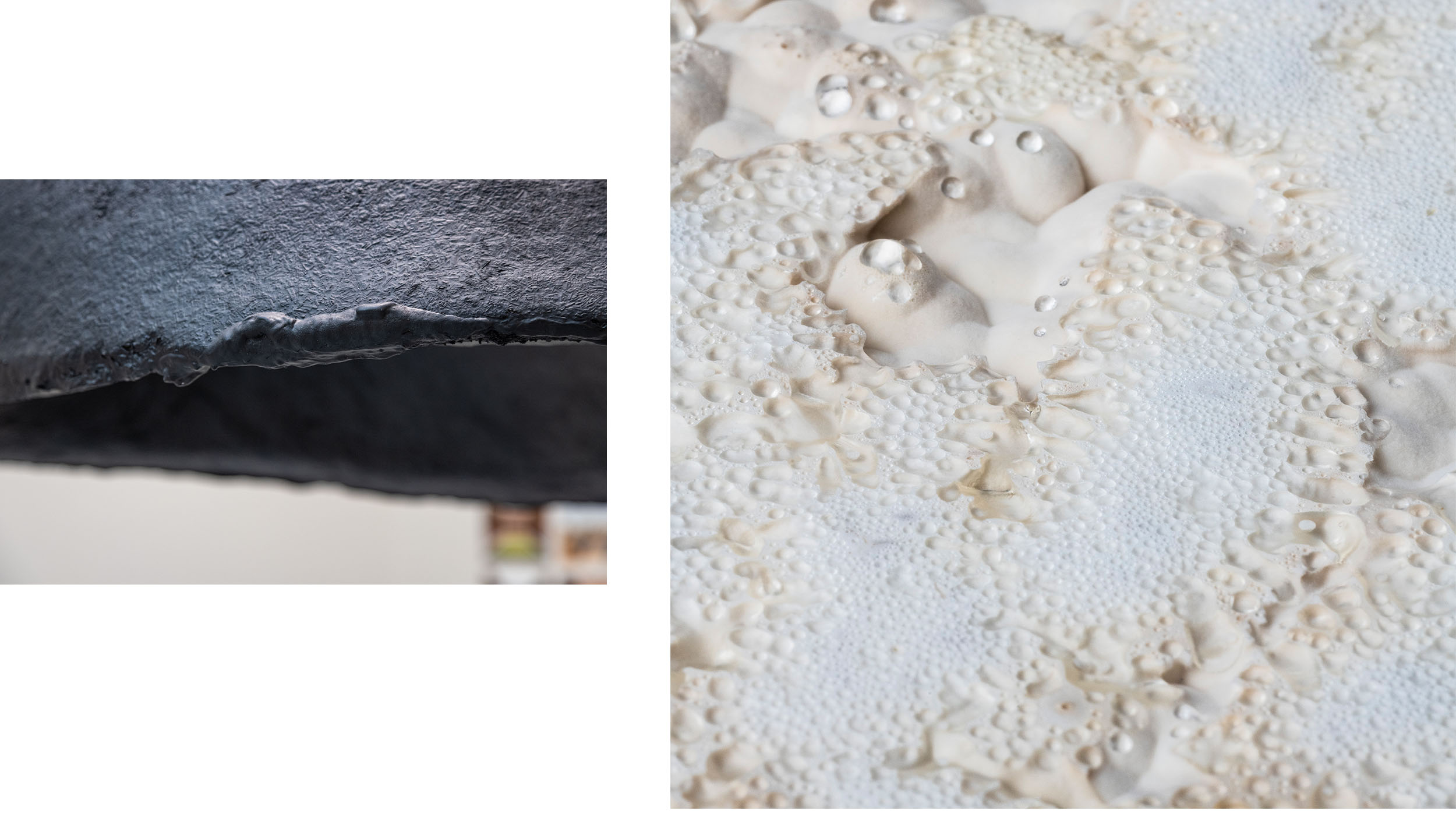
Living buildings and synthetic skin
Mycelium is already being marketed or prototyped as biodegradable substitutes for items as varied as synthetic skin used in wound healing, petroleum-derived plastics like Styrofoam, even naturally decomposing coffins and military barracks. And that’s just the beginning. Mycelium is being trained to decompose cigarette butts and soiled diapers. There’s talk of it being used in space settlements and to construct living buildings capable of regulating their own lighting systems.
“Fungi are veteran survivors of ecological disruption,” writes the biologist Merlin Sheldrake in Entangled Life: How Fungi Make our Worlds, Change our Minds, and Shape our Futures. “They are inventive, flexible, and collaborative. With much of life on Earth threatened by human activity, are there ways we can partner with fungi to help us adapt?”
Beyond these sci-fi sounding innovations, Museum of Symbiosis posits biodesign as a paradigm shift—a pathway to decolonizing science and abandoning the resource-draining, money-making modus operandi that has defined much of humankind’s recent legacy on the planet. The mycorrhizal network provides an altruistic alternative to the Darwinian notion of “survival of the fittest,” in which fungi and trees live symbiotically and care for their weaker kin, even if some scientists have rebutted this notion. (“The forest floor is a forum of fierce competition,” plant ecologist Kathryn Finn has argued. “Trees are not people and forests are not human families.”) Hearing biotech’s proselytizers, you might consider it the dawning of a new age.
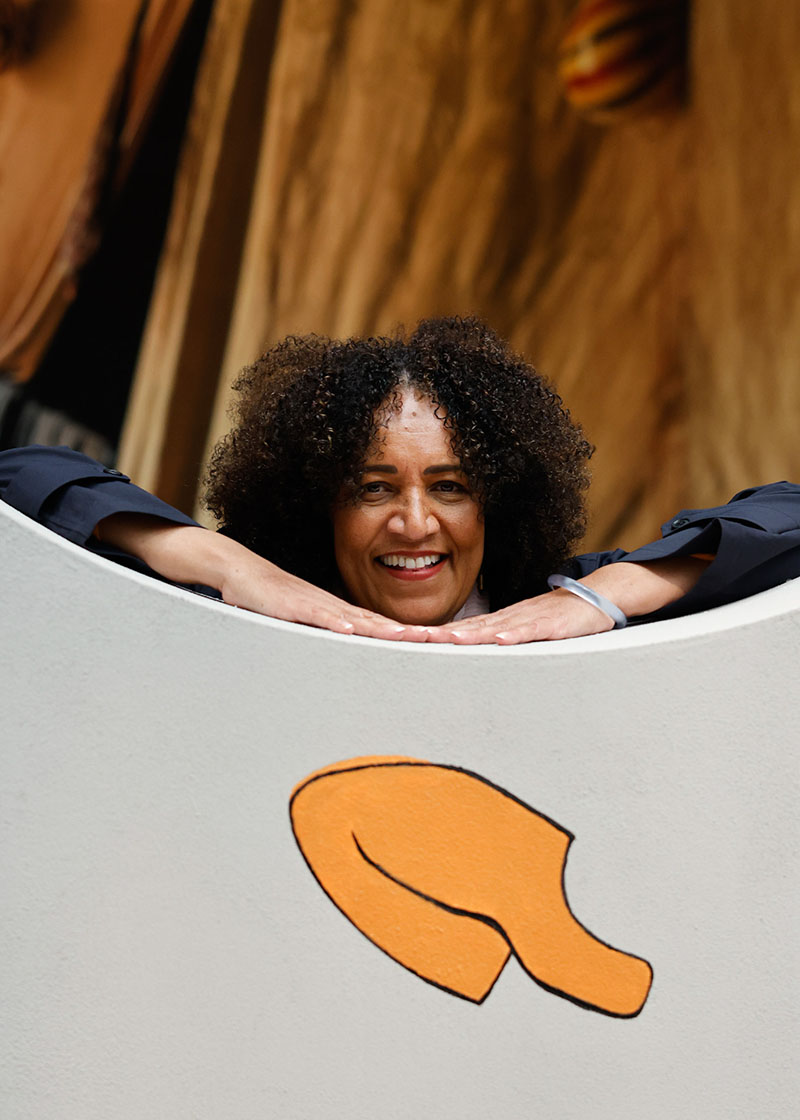
What will that new age look like?
Imagine this: Our own era is a distant dream, and humanity has entered the 22nd century. Far from the all-too-plausible doomsday scenarios climate scientists now fret about, humankind—and the planet—are flourishing in tandem. The world is divided into rural ecoregions. Major cities have survived as provincial capitals circled with fungal waste processing plants. Citizen scientists tinker with robot biomechanics in community-run biotechology labs. Street market vendors hawk bacteria-dyed silks and lab-grown fruits. Forget window-ledge basil; everyone has a home garden laboratory. And algae-powered computers. Gone is the Palo Alto of yesteryear, with its elite suburbs filled with disruptors and venture capitalists. The name lives on as a rosebush-filled wetland.
That’s the premise of the exhibit Museum of Symbiosis, whose earliest incarnation was a 2022 work of speculative fiction. The short story—also called “Museum of Symbiosis”—was commissioned by Faber Futures and written by journalist and musician Claire L. Evans before being adapted into the Biennale exhibit. It was included as part of Bio Stories, a 130-page illustrated report that Faber Futures produced as part of the Global Future Council on Synthetic Biology, convened by the World Economic Forum in 2020. Told in the second person, the narrative describes an unnamed protagonist touring a vast archive that chronicles the beginning of the so-called Symbiotic Era, or Symbiocene, which began back in 2030. That’s when humankind decided to “untether science from its extractive history,” writes Evans, working with life systems instead of against them. It revitalized Indigenous knowledge systems, toppled colonialist legacies, harnessed biotechnology, and “like the spidery threads of mushroom mycelium,” transformed the poison of past centuries “into food.”
The Biennale exhibit translates the fictional archive into snippets of interviews with an interdisciplinary cross-section of real-life interlocutors. Ionat Zurr, an Australian bio artist who works with engineered tissue, muses about the Frankenstein-like scope of synthetic biology, defined by the World Economic Forum as “the engineering and redesign of biological systems that do not already exist in nature.”
In the exhibit, we’re taken mushroom foraging with Chido Govera, farmer and campaigner from Zimbabwe, who talks about ancestral knowledge and the idea of nature as divine intelligence, not an exploitable resource. Stanford professor Drew Endy enthuses about synthetic biology dissolving the Enlightenment-era dualism between humanity and the natural world. He sees STEM-major “nerds” now “coming back for the human.” After all, what are we if not “walking biotopes,” as Mogu co-founder Montalti puts it?
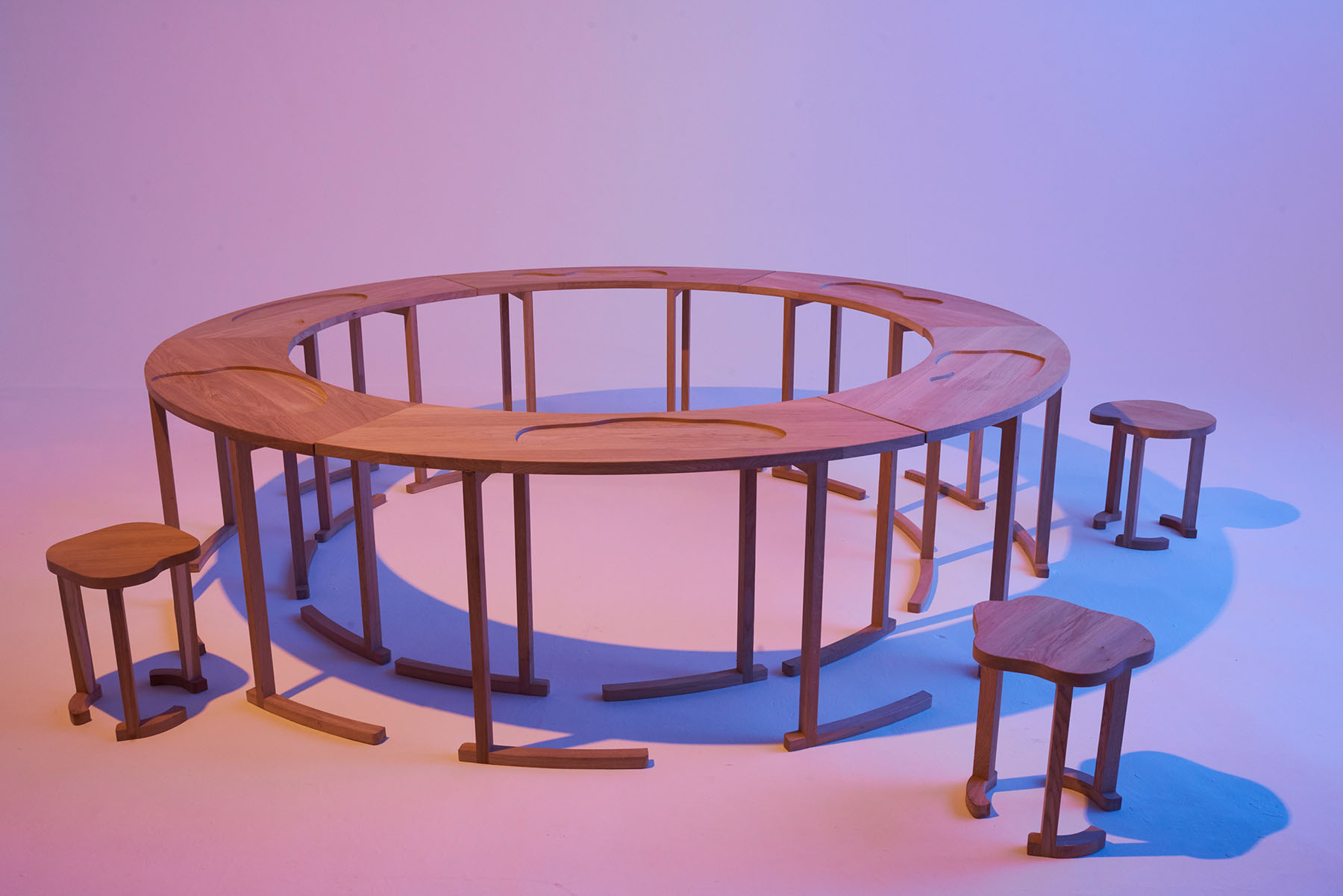
As a 90s kid raised on repeated viewings of Jurassic Park, I couldn’t suppress a certain discomfort with all this tinkering. Endy asks if we can “parent and collaborate with life” rather than “control and dominate it.” But wasn’t synthetic biology—from lab-grown beef patties and genome-edited crops, to living cells used in medicine—the perfect example of humankind’s impulse to control? I put the question to Endy in an email.
“I would say that is a valid perspective,” he wrote back. “However such a perception inherits the frame of the human as separate from the natural.” I asked what it would take for human beings to “flourish as Earthlings in partnership with all life on this planet,” as Endy himself had phrased it. His response was twofold: develop biology as a technology (achievable within the next two decades, he surmised). And promote a cultural shift to “make biotechnology cool.”
Maybe engineering life could become as secondhand as growing plants from seed. Biomass would outweigh manmade clutter again, and human exceptionalism would be a thing of the past. Not that these are all new ideas. There’s evidence that Indigenous communities in Canada and the United States were prototyping their own myco-textiles a century before Stella McCartney debuted a line of fungal leather handbags. But the addition of synthetic biology represents uncharted territory. We’re used to hearing about the post-human, but we’re well into the post-natural—and not everyone is on board. “These genetic resources, in which traditional knowledge is also linked, are used without the free, prior and informed consent of Indigenous peoples,” María Yolanda Teran, a Kichwa academic and Indigenous representative to the United Nations, argued this spring. “The consequences and impacts of these new technologies on human beings and Mother Earth are unknown.”
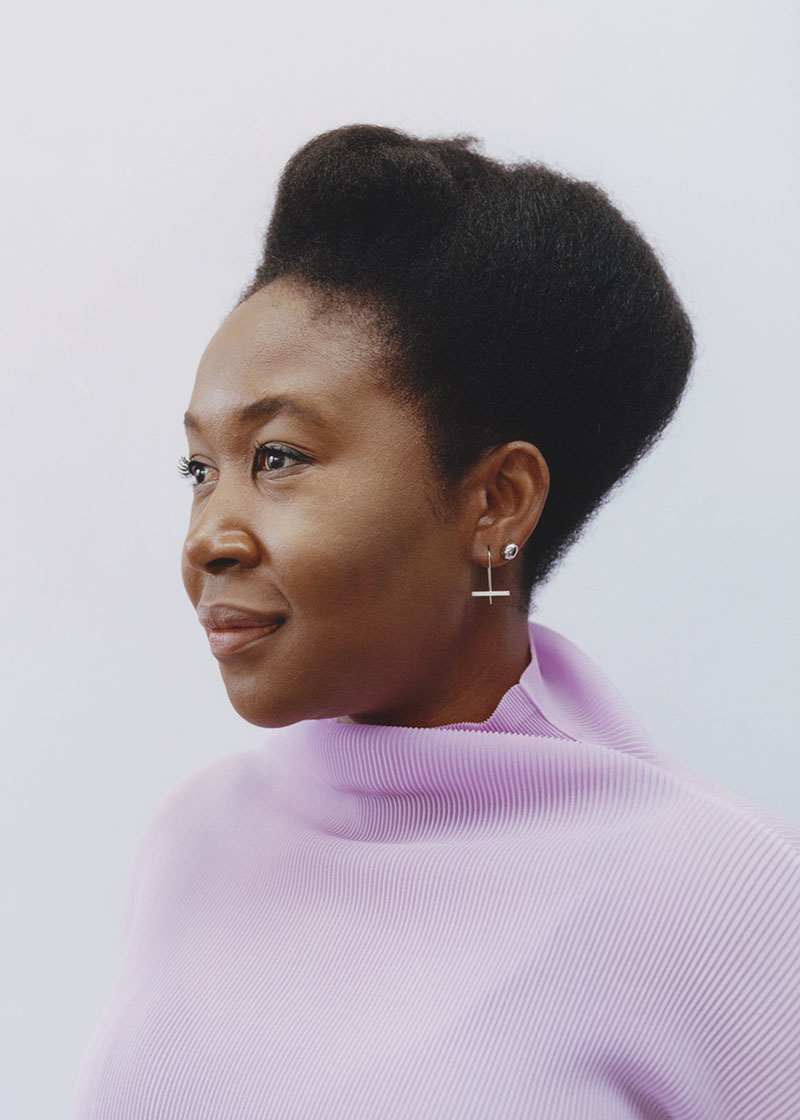
But Museum of Symbiosis works as an installation precisely because of perspectives like that. Faber Futures aims to give everyone a seat at the table—literally. Bio Stories includes an expandable round-table prototype that encourages equitable, campfire-style exchanges. Still, it’s almost jarring, all this talk of world building, when our own seems to be ending. On the train to Venice, I’d been doom-scrolling through news reports of freak hailstorms smashing cars and grounding planes, while wildfires raged through Greece and Sicily and record-setting temperatures pushed everyone into a collective delirium. I recalled the gallows-humor joke I’d recently heard: questa è l’estate più fresca dei prossimi 50 anni (“This is the coolest summer in the next 50 years.”) Staring out at parched landscapes, watching shell-shocked tourists stagger onto the carriage clutching vending-machine water bottles, I could describe the mood as apocalyptic. And yet, aren’t doomsday prophecies the ultimate indulgence?
The Biennale’s spotlight on Africa is apropos. “Life persists, and I think that’s something people who have experienced life in the Global South are attuned to,” says Natsai Audrey Chieza, the Zimbabwean-born, Oslo-based designer who founded Faber Futures in 2018, the year after recording a TED Talk about textile pigments made from bacterial Streptomyces. “I will not buy into despair narratives. I am on this planet because, despite of world endings, my people persisted. I am from a country that was colonized. Our identities were completely lost. Our culture, our world ended—through colonialism, through the transatlantic slave trade. Worlds are ongoing, and they’re constantly shifting, and ending, and beginning.” The question, Chieza added, was how to move beyond stories of persistence and survival: “How do we get to a place where a politician can use the word ‘flourish’ without everyone blushing?”
Back in the pavilion, I wander into All-Africa Protoport, a counterfactual Afrofuturist utopia conceived by the Nigerian-born, Brooklyn-based artist Olalekan Jeyifous in which decolonization sparked a pan-African conservation renaissance: Indigenous knowledge is revived, scientists pioneer zero-emissions space and deep-sea exploration, and algae-powered travel complexes, or All-Africa Protoport’s launch. Joyous news headlines flash across a wall-sized LED screen—“Sky is no longer the limit!” This may all be fiction, but it’s a mood-boosting vision. Over in the Belgian pavilion, footnoted scholarly articles from 2055 look back, much like Museum of Symbiosis, at the dawn of a new harmonious age, here called the Mycelocene. An “alliance with mushrooms” is explored over displays of mycelium-based bricks and panels. Mycelium actually get killed off in the manufacturing process, but designers would like to find ways to sustain living cells. That is, if market gatekeepers allow it.
The Romanian pavilion, in a sobering dose of reality, displays antique eco-inventions—an electric car from 1904, the world’s first aerodynamic vehicle—that manufacturers refused to let see the light of day. A wall text asks: “How much less would the environment have been polluted if these inventions had been implemented 100 years ago?”
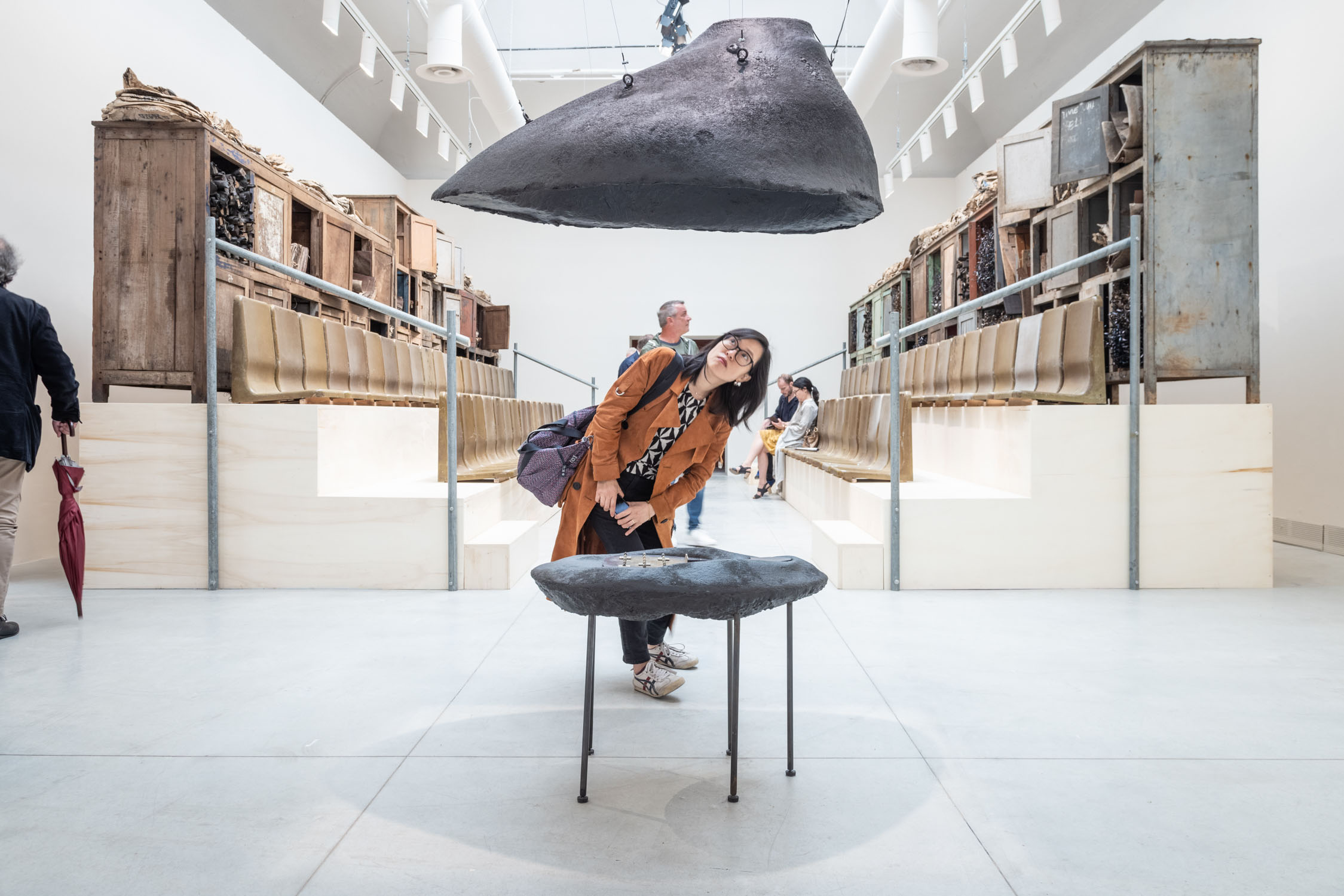
A century from now, I hope that people won’t be asking themselves the same question about mycelium-based biodesign. I would much prefer the Museum of Symbiosis’s 22nd-century vision to the world many fear we are headed for. But the Romanian exhibit’s lost relics is a far cry from the exuberant optimism of the main pavilion. And it goes downhill from there. A 15-minute walk under the punishing midday sun leads me to the Arsenale venue, a former shipyard that is the Biennale’s other exhibition space. Curator Lesley Lokko, in an effort to make this year’s Biennale as carbon-free as possible, encouraged exhibitors to use screens and projections in place of models and artifacts (the Italian-manufactured Museum of Symbiosis is a locally made exception). This means that, when a power failure strikes somewhere between an installation about the Swedish timber supply chain and an archaeological investigation into the world’s first cities, it feels a bit like an “Emperor has no clothes” moment. The Biennale’s visions flicker away in an instant. I am left standing alone in a dark, near-empty warehouse.
As Mark Twain once put it: “You can’t depend on your judgment when your imagination is out of focus.” But if the point is translating speculation into reality, then I fear we have a long way to go.
When I return to Museum of Symbiosis in the main pavilion for one last look, the 13-minute loop is still playing: In the midst of a global pandemic… The narrator sounds a touch more plaintive somehow, as if she can perceive the Biennale-goers casting unseeing glances at the dome’s ash-black mycelium surface before wandering on. Who can blame them, amidst such an overload of ideas? The pavilion can feel like a state-of-the-art vision board. But this imaginative exercise is driven by a hunger for seismic change. And for any change to happen, we need to all take a seat at the table. As Chieza tells me, “Museum of Symbiosis is unashamedly utopian because I refuse to accept that our imagination is enough at pragmatism. We need to hope for, and we need to be able to hold onto, something we want.” What would it take for the people strolling by to pause and listen, or better—envision their own utopias?
In Faber Futures’ designer-speak, we are all stakeholders when it comes to the future of this planet.
























